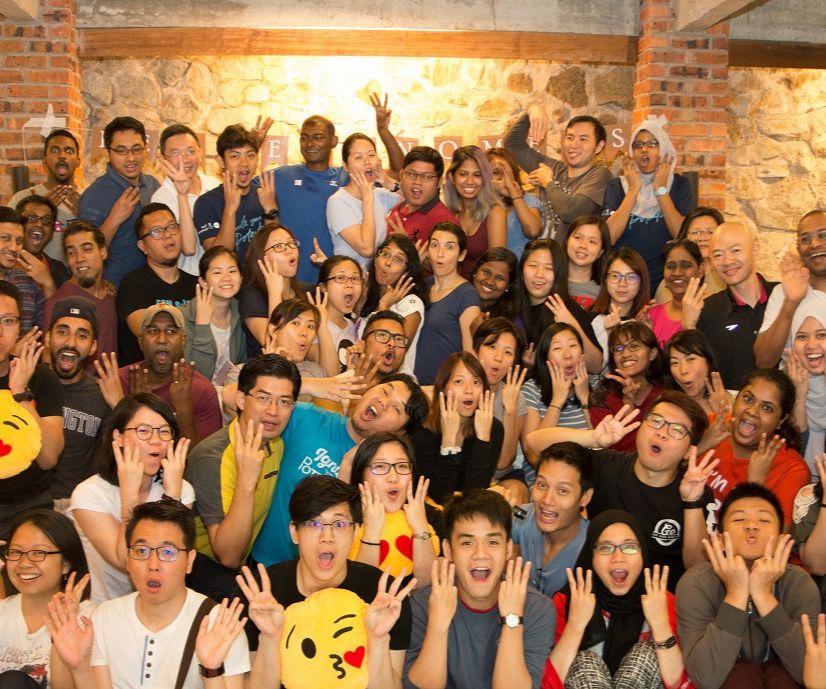How Do You Onboard a Senior Leader?

A senior leader joins the company. Having come from a prestigious company and now in-charge of an important portfolio there are a lot of expectations from the leader.
After the initial euphoria dies down, a lot of murmurs start emerging about the leader’s working style, review mechanisms, peer networking, etc. And soon the leader leaves the company.
Sounds familiar? Isn’t this a common scenario which we see erupting occasionally in all companies? A study once estimated that nearly half of all external senior hires fail within 18 months in a new position.
In the corporate world where there is already a war for talent, such failures can have catastrophic consequences. A successful onboarding programme can reduce – if not eliminate – such failures.
Onboarding is commonly understood as the process of integrating a new employee into an organisation. Yet, different approaches and types of onboarding are seen across organisations.
The focus of this article is to understand some of the nuances that need to be considered while developing an onboarding programme for senior hires or leaders.
Before we delve into how we can make onboarding more effective for leaders, here are a few points to consider that emphasise the need for having an excellent onboarding programme.
Check out: 3 Tips to Quickly Onboard New Employees
New hire mindset
This is by far the most important and commonly ignored variable to be considered while designing an onboarding programme. We observe that many companies have a one-size-fits all approach for onboarding.
If the company does mass hiring for sectors like information technology (IT) or Information Technology Enabled Services (ITES), then there are select days on which the onboarding process starts. It is common for all external hires irrespective of level or role.
Time is typically divided to accommodate form filling, followed by some orientation programmes after which, individuals are guided to their respective functions. If the company does limited hiring, then we can observe that onboarding is slightly more haphazard. Day one, again typically consists of filling up forms, followed by a few introductions.
However, orientation to company values, etc may nor may not happen. If it does, it may be a quarterly or periodic event during which all hires for the quarter are invited. Throughout this entire exercise we possibly do not relate or empathise with the new hire’s mindset, but there is an opportunity to continually engage with the hire once the offer is accepted.
When a person decides to leave an organisation, the individual is disengaged from work. Depending on the role for which the individual is hired, there is likely to be some apprehension and performance anxiety.
While the person may have done some basic research using informal networks or Glassdoor reviews, there will still be many unanswered questions in the person’s mind about culture and ways of working in the new company.
There may be excitement as well since individuals usually join new organisations as their first job or at a role higher than their previous job. It is with this mindset that the individual joins the organisation. And how do we welcome them? With a multitude of forms that need to be filled!
Capitalising on this mindset, allaying some of the anxieties while confirming some of the excitement in the pre-joining period itself can make the onboarding energetic and exciting for the individual.
Roles, time frames and onboarding
If the roles of a brand manager and a training executive in a fast-moving consumer goods (FMCG) company are different should they have the same onboarding program?
The above question brings out a rather stark comparison. But, we do observe that many companies follow a standard approach towards onboarding, and this may differ for senior leaders. It is important to note that different people join the organisation at different levels and in different roles.
Hence, a role-based approach towards onboarding is important. Some part of the onboarding can be common. However, with excellent technology support today, a role-based programme that sets up the role holder for success is a definite possibility.
Similarly, time frame within which a role holder is expected to contribute can also determine the duration and intensity of the onboarding programme.
For instance, in an IT services company there is an extended training period followed by deployment for fresh graduates. Onboarding programmes for such hires need to be different from those of say, individuals joining in finance or delivery leads.
Range of onboarding programmes
Across multiple companies we see onboarding at different levels. We have also heard stories of new hires who did not get basic infrastructure for a few weeks or months and were left to figure things out on their own. If we plot onboarding programmes on a spectrum, it would range from ‘Basic – Form Filling’ to ‘Elaborate Socialisation Programmes’.
Almost all companies, without fail, do the first level of onboarding (which involves form filling). This is more due to statutory and regulatory requirements. For instance, in India, transferring Provident Fund from the previous organisation, linking your bank account for salary credit, etc are commonly completed on the first day.
Similarly, companies do tend to have a slightly modified plan for onboarding senior leaders. Companies do a good job at the basic requirements to make the individual feel welcomed as s/he starts work, i.e getting the required documentation done, providing work-related infrastructure, and so on.
However, what are left wanting are the finer aspects of understanding and assimilating the culture, networking, enabling team, etc. An Egon Zhender survey reported that one of the biggest stumbling blocks for new leaders was poor grasp of how the organisation works, i.e cultural norms, practices and way of working. It appears that the current onboarding programmes are not having the desired impact.
Read: 10 Communication Strategies for New Leaders
Setting up a new leader for success
To create powerful onboarding programmes for new leaders we must understand the context in which they operate. For that we need to examine the work of leaders. Whenever a company hires an external leader it is for one – or all – of the reasons below:
- Augment existing leadership capability
- Lead a strategic initiative for which internal talent is not readily available
After joining, the company will want the leader to assume responsibility as soon as possible. To make this transition successful the company should understand what drives success for the new leader. Some aspects to be considered:
- Success of any leader is based on the team’s performance, hence breaking the ice with the team is probably one of the most important aspects to be considered.
- A leader seldom operates in isolation. To drive things to the right place, there is a strong need to build cohesion between groups having competing goals. Hence the need to understand peer networks and stakeholder expectations.
- To effectively discharge points 1 and 2 there is a need to understand the ways of working, organisational nuances, informal networks, key influencers, power centres and such finer aspects which cannot be documented. We can club all this under an overarching umbrella of cultural understanding.
Experience tells us that it is likely for a new leader to take up to nine months before he/she can demonstrate impact. A socialisation process that does not cater to the above requirements is likely to be rendered as ineffective.
In view of all these, how can we deliver a great onboarding experience to the new leader and achieve desired organisational outcomes? Here are a few ideas that can help.
1. Go digital
Thanks to digital tools, there is ample opportunity to engage with the leader well in advance. Companies are using tools to help leader complete formalities like document submissions before joining.
Pre-joining is a period when all these things can be managed. There is no point in recruiting a senior leader only to have the individual spend an enormous amount of time on the first day sifting through paperwork!
However, digital tools need not be limited to only paperwork. They can be used to actively engage with the individual – video calls with the immediate manager and other senior leaders, an introduction to the company and its values, etc are some of the things that can be managed using technology before joining.
Post-joining, these tools can help track engagement, create and track onboarding plans, push critical messages and many other things. Possibilities are endless, companies need to use these tools based on their specific requirements.
2. First day orientation
Needless to say, no digital tool can replace human interaction and the first day orientation provides that space to create the ‘wow’ effect for the candidate. A carefully crafted discussion on company culture, history, legacy and values along with key leadership meetings including the manager are key to help the leader feel welcomed.
3. Determine the time frame and create a plan
While the first two points are universal, the plan for every leader needs to one that is a departure from the standard and a move towards a customised plan. The plan should be comprehensive covering all important stakeholder meetings, regular manager catch-ups, peer meetings, team meetings. The frequency, content and number of these meetings can be determined.
However, a rule of thumb can be to cover them in the first two months of joining, in order of priority. For instance, team meetings cannot happen after two months!
Apart from the initial contact, organisations also build in check-ins to monitor progress and highlight any issues. New Manager Assimilation (NMA) is commonly used across multiple organisations after a quarter of the leader joining.
Similarly, seeking feedback from peers, stakeholders and feeding it back to the leader early during transition can avoid costly failures later. All these aspects need to be built into the plan.
4. Coaching and communication plan
While it is important to develop a plan for the new hire, it is equally important that key stakeholders within the organisation are aligned and involved in the onboarding process.
Hiring a new leader for a key position or strategic theme is akin to ushering a change in the organisation. Hence, this needs to be treated with the same rigour as a change management initiative.
Communicating with key stakeholders about the new leader, the leader’s portfolio, broad onboarding plan, and key expectations from each stakeholder is necessary.
Some senior leaders may need some coaching on how to integrate the new leader in the culture by ensuring participation in key meetings, sharing knowledge of informal networks, etc.
Creating a plan for key stakeholders is likely to reduce the onboarding time and reduce failures.
Finally, all plans are only as good as their execution! The key lies in implementing the plan and making course corrections on the way. In this piece I have tried to list down a few areas that need to be considered while onboarding a senior leader.
Onboarding at this level requires multiple functions and leaders to come together and deliver an astounding experience. It is time we start treating onboarding more as a change management initiative and less of an HR intervention!
Functional
Tags: Systems & Structures





